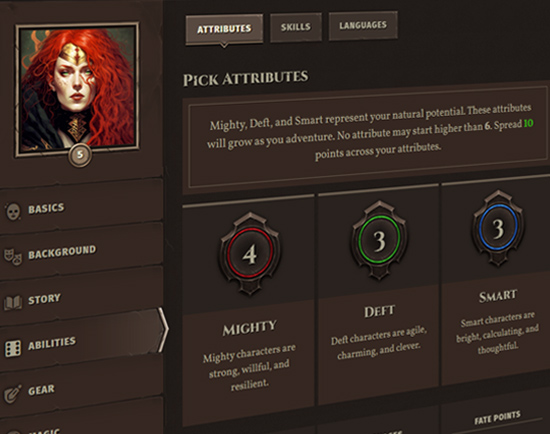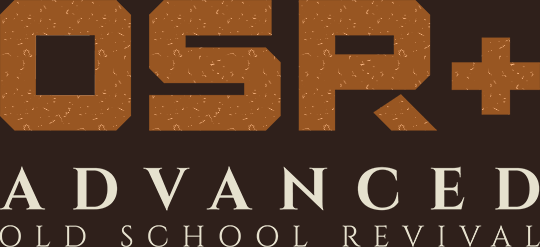Note-taking as a GM is a highly personal process, and if you're doing just fine with a spiral notebook, then maybe digital tools and online platforms may not be for you. Part of what makes the OSR the OSR is its DIY approach to just about everything. This is why we think using the best tool for the job is the way to go, even if it means cobbling together a whole bunch of disparate tools.
Note-Taking
Whether it's taking notes on the fly during a session, or capturing ideas so you don't forget, we recommend mature software like Evernote, OneNote, or Notion. The key with this kind of software is that no matter where you are, you can offload an idea to your digital brain with little friction, so you can reference it later. These softwares help you archive little notes that you can access on your desktop, browser, or mobile phone from a centralized service. Each service is free with premium features.
Writing
When you plan to sit down and do some serious editing on your adventure, Scrivener helps you focus on the writing by eliminating all the other distractions on your screen. This old mainstay is intended for organizing manuscripts and screenplays, as well as exporting documents in a standard format for those writing mediums.
A more modern, markdown-powered app called Obsidian saves notes as text files and interlinks them in a visual web to represent the relationships between your ideas. It's like a wikified version of all your scattered notes for your local machine.
Both tools have costs if you want premium features. You can also try out Fantasia Archive, a free alternative tailored to RPG worldbuilding, but it operates completely offline.
Worldbuilding
While some of the tools above let you share notes with third parties, it's not the same as having an archive of all your worldbuilding ideas that you can share with your players. These worldbuilding platforms let you rent a little website of your own under their umbrella.
While you could just set up a wiki of your own or a free WordPress website, such solutions don't provide UI features tailored to the needs of a game master out-of-box.
world anvil
Basically a wiki on steroids, the World Anvil platform is the most popular out there and tries to do a little bit of everything when it comes to presenting your campaign world, including RPG campaign management and manuscript organizing. The UI and general design leaves something to be desired, but if you're looking for the Swiss army knife of worldbuilding platforms, this is it.
Kanka, Campfire, & Obsidian Portal
Kanka, Campfire, and Obsidian Portal (and similar wiki-platforms-styled-as-worldbuilders) can all be described as “World Anvil-lite”: they tend to be more usable than World Anvil at the free tier because they offer a more intuitive interface overall. That being said, they all have fewer features and less hand-holding than World Anvil and its heavily templated approach to structuring your archive. Campfire is unique in that its pricing is based on an a la carte model (you choose the modules you want to build your subscription), whereas the others have more traditional tiered pricing.
LegendKeeper
Legendkeeper takes a visual-first approach to worldbuilding by having you tie your ideas to an interactive map that you upload. A clutter-free wiki and collaborative whiteboards allow for a visual approach to organizing your archive. The app has a more modern interface that's still in beta as of this writing. Legendkeeper is private by default, meaning you have to invite visitors to see your campaign world.
Backups & Revisions
Let's not forget to back up all that writing. If you're working with online platforms, this happens automatically as your data is stored on the provider's server. But if any writing is living on your machine for the long haul, make sure to have a physical backup on site (such as a backup hard drive that syncs your writing to it on regular intervals—we recommend a software called Macrium Reflect to do this), as well as an off-site backup that stores your writing in the cloud.
BackBlaze
There are lots and lots of backup services on the market, but the cheapest and most versatile is Backblaze, which automatically backs up everything on your computer in the background. The beauty of Backblaze is that you don't have to actively do anything to keep your stuff backed up.
GIT
Git is traditionally a tool of programmers, who use it to "version control" their software. Every time you make changes to a document, you can "commit" those changes to the git repository—a sort of history of every change ever made to the document—and this allows you to go back in time and restore earlier revisions with a few clicks. Git is not meant to be used with large files, but it can be ideal for writing: we prefer a software called Smartgit to provide a UI for managing the git version history.
SYNC
When it comes to backing up larger media files (such as images or video), a service like Sync is ideal. Other competitors include Dropbox, Box.com, or even Google Drive, but as of this writing none of them offer unlimited storage and the ability to sync a folder to your computer that automatically backs up to the cloud in the same way Sync does. At OSR+, we store all our raw actual play recordings in Sync as a cloud backup, and that equates to terrabytes of data!
 Archetypes
Archetypes Armor
Armor Classes
Classes Conflicts
Conflicts Cultures
Cultures Ethos
Ethos Flaws
Flaws Glossary
Glossary Kits
Kits Maleficence
Maleficence Origins
Origins Shields
Shields Skills
Skills Spells
Spells Stances
Stances Status Effects
Status Effects Tactics
Tactics Talents
Talents Techniques
Techniques Treasure
Treasure Weapons
Weapons











 Hall of Heroes
Hall of Heroes Hall of Legends
Hall of Legends



 Dungeons & Flagons
Dungeons & Flagons